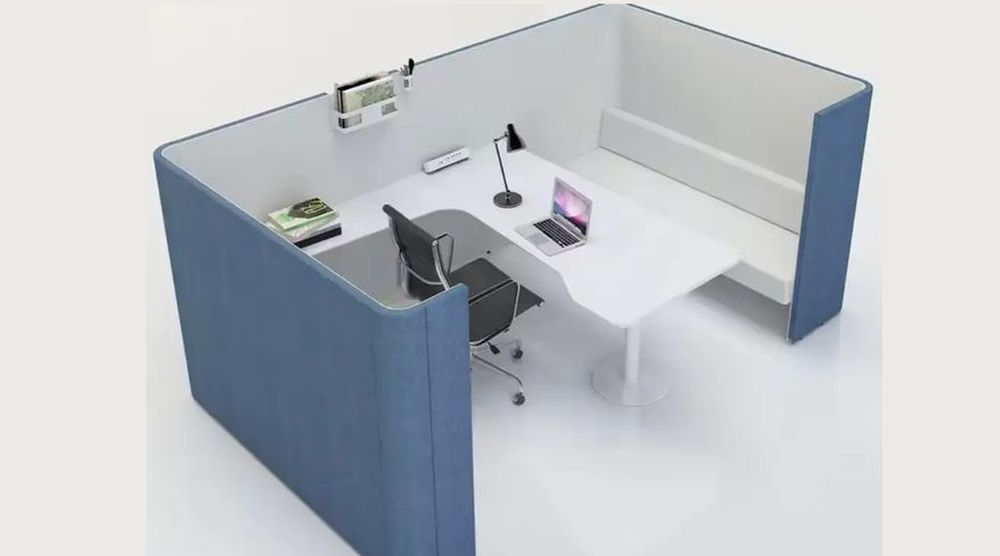
In today’s business world, the layout of an office defines how people work, collaborate, and feel. Office cubicle furniture is the foundation of efficient and organised workplaces, blending structure with flexibility. Far from the old “cube farm” stereotype, modern cubicles are now stylish, ergonomic, and adaptable — balancing privacy with collaboration.
Whether you’re furnishing a start-up or redesigning a corporate floor, modular office cubicles offer the perfect solution. They’re space-efficient, cost-effective, and easy to reconfigure. This comprehensive guide explores everything you need to know about selecting, arranging, and optimising modern office cubicle furniture.
What is office cubicle furniture?
Office cubicle furniture refers to modular workstation systems that divide an open space into individual or semi-private work areas. Each cubicle typically includes partitions, desks, storage, and ergonomic seating, designed to boost productivity and focus.
Unlike traditional offices with fixed walls, office partition systems and modular office cubicles allow flexible reconfiguration. Businesses can easily add or remove panels, adjust layouts, or expand for new teams without costly renovations.
Core components include:
- Cubicle panels and partitions. The backbone of office cubicle walls and dividers, offering privacy and sound control.
- Desks and work surfaces. From ergonomic cubicle desks to L-shaped cubicle desks, these are designed for efficiency and comfort.
- Storage options. Cubicle desk with drawers, overhead bins, and filing cabinets to keep workstations tidy.
- Accessories. Cable management, monitor arms, and office cubicle lighting solutions enhance comfort and usability.
Modern office workstation partitions integrate seamlessly into open environments while maintaining personal work zones.
Evolution of modern office cubicles
Introduced in the 1960s, cubicles were meant to provide flexibility and privacy. Over time, they evolved into modular, technology-friendly, and ergonomic setups.
Today’s modern office workstations merge open collaboration with personal focus zones. Designers use office cubicle layout ideas that combine transparency, natural light, and acoustic comfort.
With modular office partition panels and contemporary office cubicle furniture, businesses can now create spaces that adapt to evolving workstyles, from hybrid work to activity-based layouts.
Benefits of office cubicle furniture
1. Improved productivity
Private workspaces reduce distractions and improve focus. Ergonomic office cubicle setups promote healthy posture and long-term comfort.
2. Space efficiency
Compact office cubicles and space-saving office cubicles help maximise floor area — ideal for small or expanding offices.
3. Collaboration and flexibility
Using collaborative workspace furniture allows teams to interact easily while maintaining individual privacy.
4. Aesthetic and professional appeal
Modern cubicle office design solutions integrate elegant finishes, branded colours, and glass panels, enhancing the company’s image.
5. Cost-Effectiveness
Budget-friendly office cubicles and workstation cubicle systems offer long-term value through modular reusability and durability.
Types of office cubicles
1. Standard panel-based systems
Classic cubicles with office cubicle panels provide structure and noise reduction — ideal for accounting, HR, or call centres.
2. Low-wall cubicles
These low wall office cubicles balance privacy and openness, encouraging casual communication.
3. High-wall cubicles
High wall office cubicles offer more privacy and acoustic insulation — perfect for executives or focused roles.
4. Open-plan workstations
Open plan office furniture and benching systems are perfect for creative or collaborative teams.
5. Private office cubicles
Provide a dedicated environment for managers or employees who handle sensitive information.
6. Call center cubicles
Call center cubicle furniture is compact, sound-insulated, and optimised for communication-heavy environments.
7. Executive cubicle systems
Executive office cubicle systems use premium finishes like glass, veneer, and integrated storage for a refined corporate look.
Ergonomics and comfort
An ergonomic workspace reduces fatigue and boosts focus. Ergonomic cubicle desks come with adjustable heights, while adjustable office cubicle desks allow users to switch between sitting and standing.
Ergonomic elements include:
- Adjustable chair height and lumbar support
- Proper monitor distance
- Keyboard trays and wrist rests
- Office cubicle privacy panels for visual comfort
Ergonomic office cubicle setups combine design and science to enhance employee well-being and productivity.
Material choices and finishes
Cubicle furniture materials impact durability, cost, and visual appeal.
- Laminate and melamine. Affordable and easy to maintain.
- Fabric panels. Absorb noise — ideal for acoustic cubicle partitions.
- Glass panels. Promote transparency and light flow.
- Metal frames. Durable and stylish, common in industrial cubicle systems.
- Wood veneers. Add sophistication for executive cubicle furniture.
Mixing materials like glass and fabric creates modern, dynamic cubicle office design solutions.
Designing a cubicle layout
Designing the perfect office cubicle layout involves balancing workflow, comfort, and aesthetics.
Key considerations:
- Functionality. Design around tasks and team needs.
- Lighting. Integrate office cubicle lighting solutions for visibility and ambience.
- Acoustics. Use acoustic cubicle partitions for noise reduction.
- Traffic Flow. Keep aisles open and accessible.
- Privacy: Balance transparency and isolation.
Creative office cubicle layout ideas make small spaces feel larger while supporting collaboration.
Storage and organisation
Efficient storage keeps workstations clutter-free. Cubicle workstations with storage, office cubicle storage cabinets, and office furniture for small spaces help maintain a clean, professional look.
Consider adding under-desk drawers, overhead shelves, and modular cubicle storage units for flexible organisation.
Collaboration vs. Privacy
Modern offices blend open collaboration with private focus areas. Office cubicle workstation furniture can achieve both through multi-person office workstations and office cubicle privacy panels.
For teamwork, collaborative workspace furniture and modular office cubicles create shared zones. For focused tasks, high wall office cubicles provide isolation and quiet.
Sustainability and durability
Eco-friendly commercial office cubicle furniture uses recyclable materials and non-toxic finishes. Modular office partition panels allow reuse and reconfiguration, reducing waste.
Durability also plays a key role — quality cubicle furniture can last a decade or more with proper care.
Maintenance tips
- Wipe laminate and glass panels regularly.
- Vacuum fabric partitions to remove dust.
- Check connectors and joints annually.
- Replace worn-out wheels or panels when needed.
- Maintain consistent lighting for employee comfort.
Maintaining office workstation partitions not only extends lifespan but also preserves aesthetics.
Modern trends in cubicle design
a. Hybrid Work Adaptability
Customizable office workstations and movable partitions allow easy reconfiguration between in-office and remote setups.
b. Acoustic comfort
Acoustic cubicle partitions are now essential for open environments, helping employees focus in busy offices.
c. Smart integration
Desks with built-in power outlets, wireless charging, and data ports enhance functionality in cubicle workstations with storage.
d. Aesthetic upgrades
Contemporary office cubicle furniture uses muted tones, natural wood grain finishes, and sleek metal frames.
e. Compact designs
Small office cubicle setups and space-saving office cubicles are ideal for startups or coworking spaces with limited floor area.
How to choose the right cubicle system
When selecting office cubicle workstation furniture, consider your workflow, space constraints, and aesthetic preferences.
Checklist:
- Choose between high wall and low wall office cubicles based on privacy needs.
- Opt for ergonomic cubicle desks to promote comfort.
- Use modular office cubicles for future flexibility.
- Integrate office desk divider systems for efficient zoning.
- Add office cubicle lighting solutions for visual appeal.
A reliable supplier can help you design cubicle office design solutions tailored to your company’s goals.
Budget Planning
The cost of commercial office cubicle furniture varies based on materials and features.
- Budget-friendly office cubicles: $600–$900 per station.
- Mid-range modular systems: $1,000–$1,800 per workstation.
- Executive office cubicle systems: $2,000–$3,500 per workstation.
Investing in high-quality workstation cubicle systems ensures better durability, comfort, and long-term ROI.
Enhancing small office spaces
For smaller offices, space planning is crucial. Use compact office cubicles, office furniture for small spaces, and office cubicle renovation ideas to optimise every inch.
Glass partitions, L-shaped cubicle desks, and modular storage help keep small work environments functional and attractive.
Acoustic and lighting solutions
Good acoustics and lighting elevate the workplace experience. Acoustic cubicle partitions minimise distractions, while office cubicle lighting solutions improve focus and mood.
Consider LED task lighting or overhead soft lights to maintain comfort and reduce eye strain.
Upgrading existing workspaces
Refreshing old cubicles doesn’t always require full replacement. Office cubicle renovation ideas include:
- Adding new panel fabrics or colours
- Upgrading to adjustable office cubicle desks
- Installing office cubicle privacy panels
- Integrating modern power modules and LED lights
These updates can instantly modernise any workspace without major disruption.
Future of office cubicle design
The future of office cubicle furniture lies in flexibility, technology, and wellness. Expect more modular office cubicles, smart height-adjustable desks, and acoustic pods designed for hybrid teams.
Multi-person office workstations and customizable office workstations will dominate the market as companies embrace adaptable environments.
Conclusion
Office cubicle furniture has evolved from rigid partitions into a smart, modular, and ergonomic system that enhances productivity and comfort. From open plan office furniture to executive office cubicle systems, every piece serves a purpose — creating a workspace that adapts to modern needs.
By choosing the right combination of office cubicle panels, workstation cubicle systems, and ergonomic cubicle desks, businesses can craft environments that are efficient, professional, and inspiring.
Invest wisely in your cubicle office design solutions, and you’ll create a workspace that empowers employees, reflects brand values, and grows with your business.
